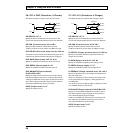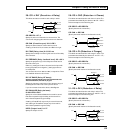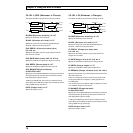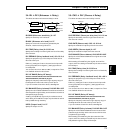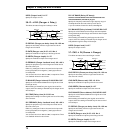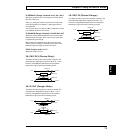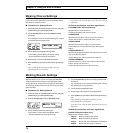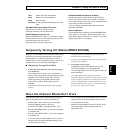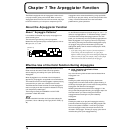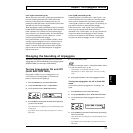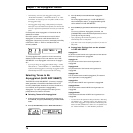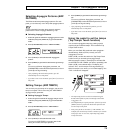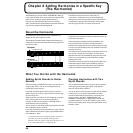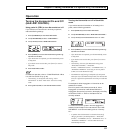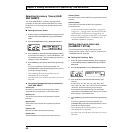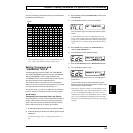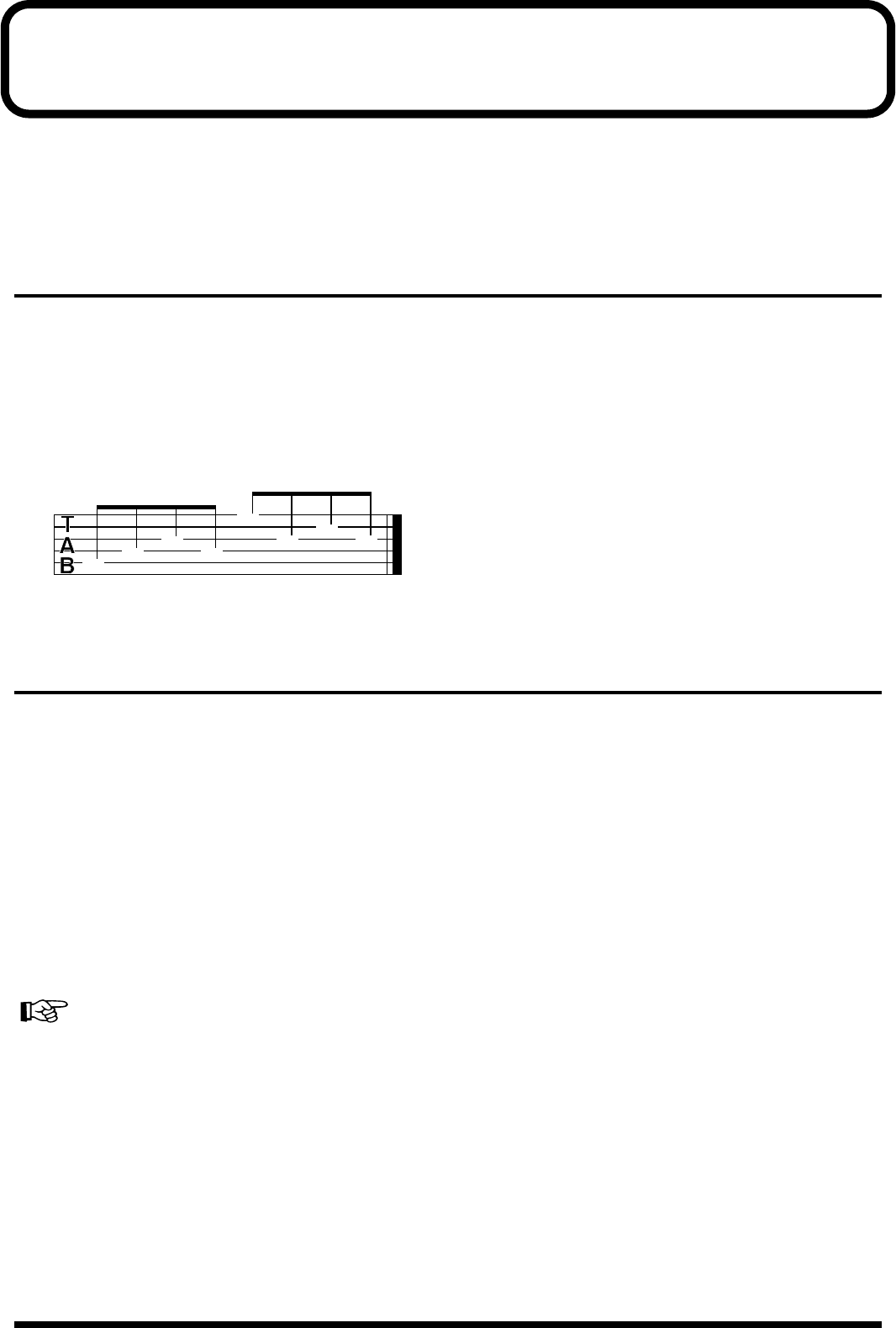
76
Chapter 7 The Arpeggiator Function
The GR-33 is equipped with an Arpeggiator function that is
uniquely suited to guitar performances. When turned on,
Arpeggiator takes over when a chord is strummed, and plays
the chord’s notes for you in simple or complex ways. The
arpeggiator can be create a basic backing using synthesizer
sounds as you play the melody, and can also provide a wide
variety of musical effects that have never before been
possible with a guitar synthesizer.
About the Arpeggiator Function
About “Arpeggio Patterns”
Let’s consider the simplest way to play an arpeggio on an
actual acoustic guitar.
The left hand fingers the song’s chord progression.
Meanwhile, the right hand plays a constant pattern, such as
Strings 5, 4, 3, 4, 1, 3, 2, 3.
fig.7-01
On the GR-33, the sequence of played strings (“5, 4, 3, 4...”) is
called an “arpeggio pattern,” or sometimes simply “pattern.”
The GR-33 contains 50 preset arpeggio patterns. For each
patch, you can select any one of the preset arpeggio patterns.
When Arpeggiator is on, fingering a chord (or single note)
and stroking the strings once causes the arpeggiator to play
an arpeggio using synth sounds according to the patch
settings that specify how the notes are to be played—ARP.,
TEMPO, and so on.
* If you play a string that is not part of the selected pattern—
such as String 6 in the example above—or if you play a
different number of strings, the GR-33 intelligently adapts the
pattern to what you play. For example, it may use the played
chord’s lowest tone (root) as the basis for its arpeggio.
Effective Use of the Hold Function During Arpeggios
The hold effect obtained by pressing Pedal 3 while in Pedal
Effect mode can be used to create a chord progression
without stopping or breaking the rhythm produced by
Arpeggiator.
When Arpeggiator is on, the effect of the Hold pedal is
applied only to arpeggios—as opposed to its usual behavior.
This means that it can hold the arpeggiator’s pattern playing
one tone while you pluck out a melody with the other.
The GR-33 also has a latch hold that can cause arpeggios to
continue to play even after the pedal is released. It will play
until the pedal is pressed again.
The hold type is set by the COMMON “HOLD TYPE”
parameter in Patch Edit mode.
For more detailed information and instructions about this
parameter, refer to “Selecting Hold Type (HOLD TYPE)” (p.
45).
◆ Hold Variations Available When
Arpeggiator Is On
Any of the following hold variations can be selected when
Arpeggiator is on.
Damper:
Pressing the pedal and playing the guitar produces an
arpeggio that is held even after the string stops vibrating. If
the strings are played again, the new notes are recognized by
Arpeggiator and affect the held arpeggio.
Releasing the pedal ends the hold for the arpeggio—if the
string has already stopped vibrating, the arpeggio stops. Use
this feature when you want to change the content of
arpeggios without breaking the rhythm created by
Arpeggiator.
Sostenuto:
Pressing the pedal as you play while arpeggios are being
produced causes the arpeggio currently being played to be
held until the pedal is released. If a new string is played
while the arpeggio is held, this new performance is not
reflected in the arpeggio. This lets you to play guitar-sound
melodies along with synth arpeggio backing.
1st
2nd
3rd
4th
5th
6th
3
2
0
2
0
0
1
0
(Chord = C)



